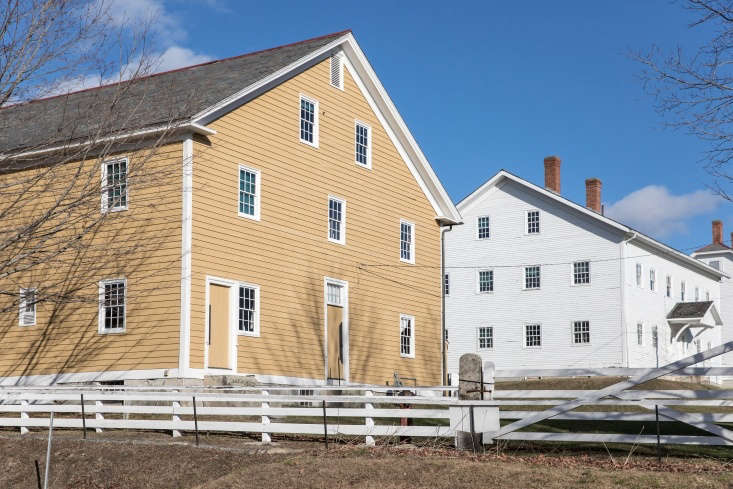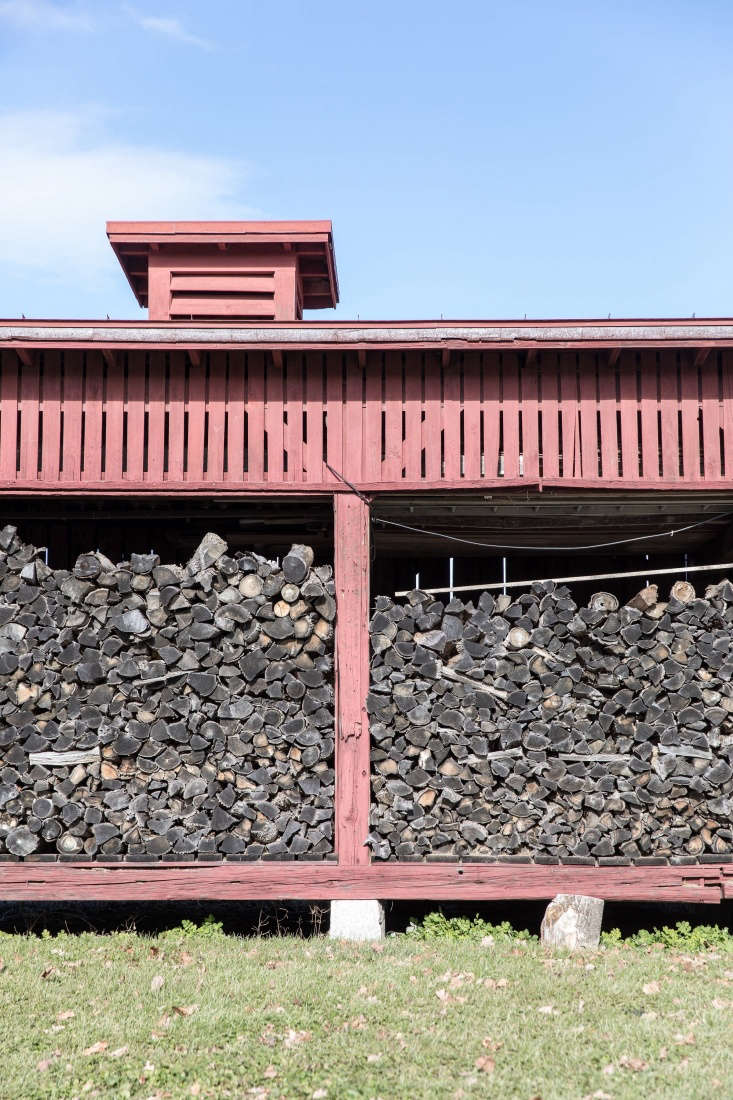A few weeks back I went to Canterbury Shaker Village in New Hampshire on a frosty morning in search of smart, simple design and storage ideas for the home (and found plenty; read about that here). But I shouldn’t have been surprised to learn that the Shakers’ knack for efficient, beautiful design applied outdoors as well, in their efficient fieldstone paths, orderly rows of trees, wooden houses painted in muted palettes, and practical rules of thumb for vegetable gardens. As I walked the quiet village I stuffed my hands in my pockets against the cold and took mental notes on their ingenuity and orderliness, best summed up in a Shaker adage I later read: that a garden is an index of the gardener’s mind. Here are 15 garden ideas to steal from the Shakers:
Photography by Erin Little for Remodelista, except where noted.
1. Find beauty in order.

But the Shakers weren’t so fanatical about order that they pruned their trees into perfect shapes; note the sugar maples left bare and natural here.
2. Adopt a muted palette.

If you must add trim, think carefully: “Depending upon the style of the house, select colors for the window sash, trim boards, doors and shutters that complement the wall color. No more than a total of three colors should be used.”
3. Line the garden shed with peg rails.

4. It takes a village.

Here, white buildings frame a tan-colored structure, with subtle brick-red trim as a complement.
5. Use yellow.

6. Keep a broom at the ready.

7. Cut down on dirt.

When laying a garden path, take the opportunity to be artful: use it to create order in the garden, and align it with the front door for cleanliness and efficiency.
8. Save (or give) seeds.

9. Cut flowers without stems.

10. Plant in threes.

11. Dry herbs artfully.

12. Stock up for winter.

13. Practice minimalism everywhere.

14. Think of outbuildings as accessories.

15. Build to last.

As a reporter for The New York Times described in a 1990 piece about Shaker walls, “With their enormous stones and careful construction, these walls will not need repairing every spring when winter frosts have finished heaving the earth about. No, these are walls that time will not move, let alone frost. Embedded in them, it seems, are the basic tenets of the Shakers, the idea that labor was consecrated and that every object should be made as if the maker would die tomorrow but the object must last a thousand years.”
N.B.: See all of our guides to Garden Design 101, including Exteriors & Facades 101 and more posts about Paints & Stains. And for more garden ideas to steal from around the world:
- 10 Garden Ideas to Steal from the Pilgrims
- 10 Garden Ideas to Steal from Scotland
- 10 Garden Ideas to Steal from Provence










Have a Question or Comment About This Post?
Join the conversation